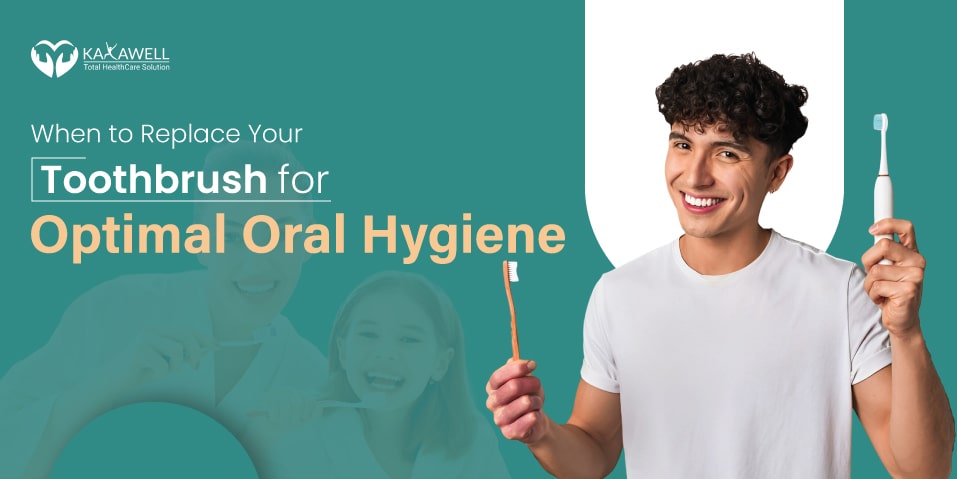Maintaining optimal oral hygiene is crucial for overall health and well-being. Regular dental care practices, including brushing teeth, flossing, and routine check-ups, can significantly prevent dental diseases and ensure a bright, healthy smile. One commonly overlooked aspect of oral hygiene is the frequency of toothbrush replacement, which can significantly impact dental health.
Read on to learn how often you should replace your toothbrush.
Understanding Toothbrush Wear and Replacement
The primary tool in any oral hygiene regimen is the toothbrush. Over time, toothbrush bristles deteriorate and lose their effectiveness. Worn-out bristles become frayed and rough, potentially harming the gums and less effective at removing plaque. Dental professionals generally recommend replacing your toothbrush every three to four months.
However, this can vary based on individual usage and the wear visible on the toothbrush. Some signs that you need a new toothbrush include splayed or frayed bristles and any noticeable accumulation of debris that remains even after thorough rinsing.
Factors Influencing Toothbrush Longevity
Several factors can affect how often you should replace your toothbrush. These include:
- Brushing technique: Aggressive brushing can cause the bristles to break down faster.
- Type of bristles: Toothbrushes with softer bristles may wear out more quickly than those with medium or hard bristles.
- Usage frequency: More frequent brushing may increase wear and tear.
- Oral health status: People with orthodontic appliances like braces may need to replace their toothbrushes more frequently.
Additionally, it is important to explore various dental treatments that enhance oral health and aesthetics. For example, visiting pages discussing types of cosmetic dentistry can provide insights into essential procedures that can improve the appearance of teeth while maintaining oral hygiene.
Proper Toothbrush Care
Proper care is essential to extend your toothbrush’s life and maximize its effectiveness. Some proper toothbrush care tips include:
- Rinse thoroughly: After each use, thoroughly rinse your toothbrush with water to remove toothpaste and debris.
- Store properly: Keep your toothbrush upright and allow it to air-dry. Avoid using toothbrush covers, which can create a moist, enclosed environment conducive to bacteria growth.
Separate toothbrushes: If multiple toothbrushes are stored in the same holder, ensure they do not touch each other to prevent cross-contamination.
Impact of Environmental Factors
Environmental factors can significantly influence the frequency of toothbrush replacement. High-humidity environments pose a particular challenge, as toothbrushes may not dry thoroughly between uses, creating ideal conditions for bacterial proliferation. This moisture can accelerate the bristles’ degradation and compromise the toothbrush’s structural integrity, making it less effective in cleaning teeth and removing plaque.
To ensure optimal oral hygiene, individuals living in humid areas might consider replacing their toothbrushes more frequently than the standard recommendation, thus preventing potential health risks associated with bacterial contamination.
When to Replace a Toothbrush Sooner
There are circumstances when a toothbrush should be replaced more frequently. These include:
- After illness: Replace your toothbrush after recovering from an illness like the flu or a cold to prevent re-infection.
- Visible wear: If the bristles become frayed before three months, replace the toothbrush immediately.
- Post-dental surgery: Following any oral surgery, consider using a new toothbrush to avoid introducing bacteria to surgical sites.
Choosing the Right Toothbrush
When selecting a new toothbrush, consider the following:
- Bristle type: Most dentists prefer soft bristles because they are gentle on the gums and enamel, reducing the risk of causing damage while still effectively cleaning the teeth.
- Head size: A smaller head is advantageous as it can easily reach all mouth areas, including the harder-to-reach back teeth, ensuring a thorough cleaning.
- Handle design: Ergonomic handles are designed to provide a better grip and enhanced control during brushing. This is particularly beneficial for individuals with limited dexterity or for anyone who wants to ensure they are brushing with the correct technique and pressure.
Regular Dental Check-Ups
Regular dental check-ups are a fundamental component of maintaining overall oral health. During these visits, dental professionals assess the condition of your teeth and gums, detect early signs of decay or gum disease, and perform thorough cleanings to remove plaque and tartar buildup that regular brushing and flossing might miss. These appointments also allow dentists to provide personalized advice on improving your daily oral hygiene routine and discuss any concerns you might have about your oral health.
Staying consistent with these check-ups can help ensure the longevity of your dental health and prevent more severe conditions in the future.
Conclusion
Replacing your toothbrush regularly is a simple yet crucial part of maintaining oral health. By understanding the factors influencing toothbrush wear and implementing proper care techniques, you can ensure your toothbrush effectively keeps your teeth and gums healthy. Coupled with routine dental visits and considering cosmetic dental treatments to enhance your smile, you can maintain both the health and aesthetics of your teeth.
